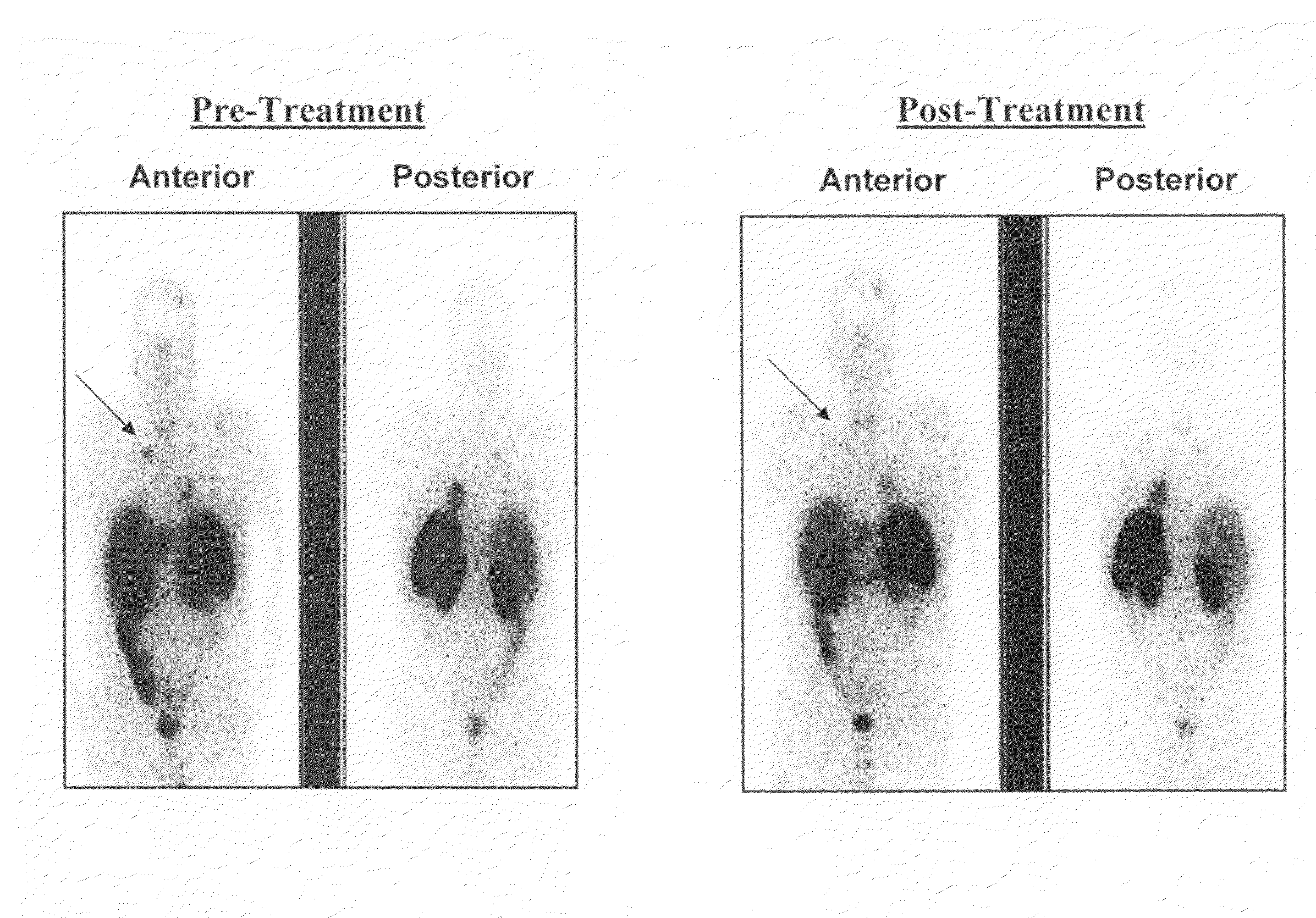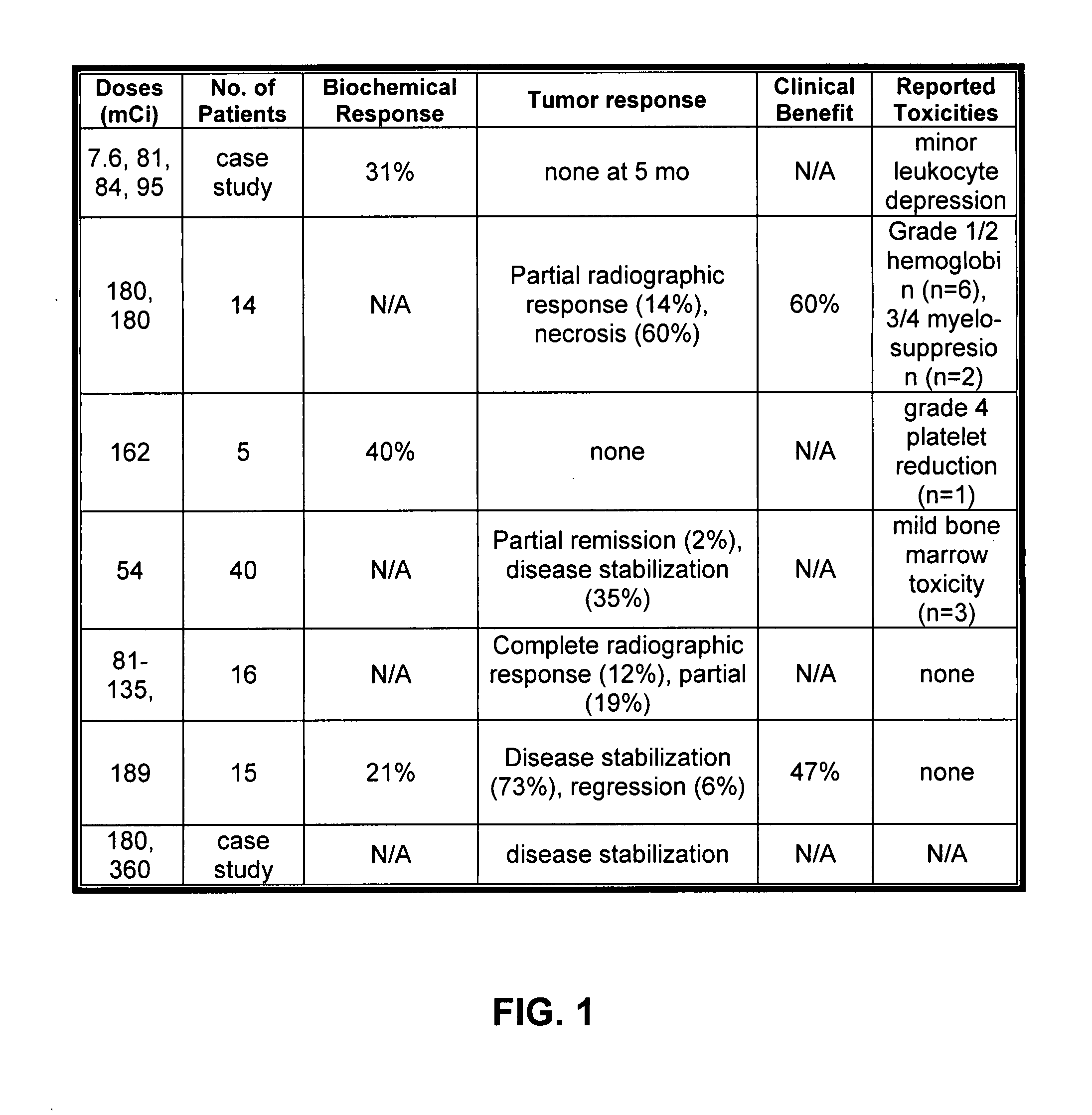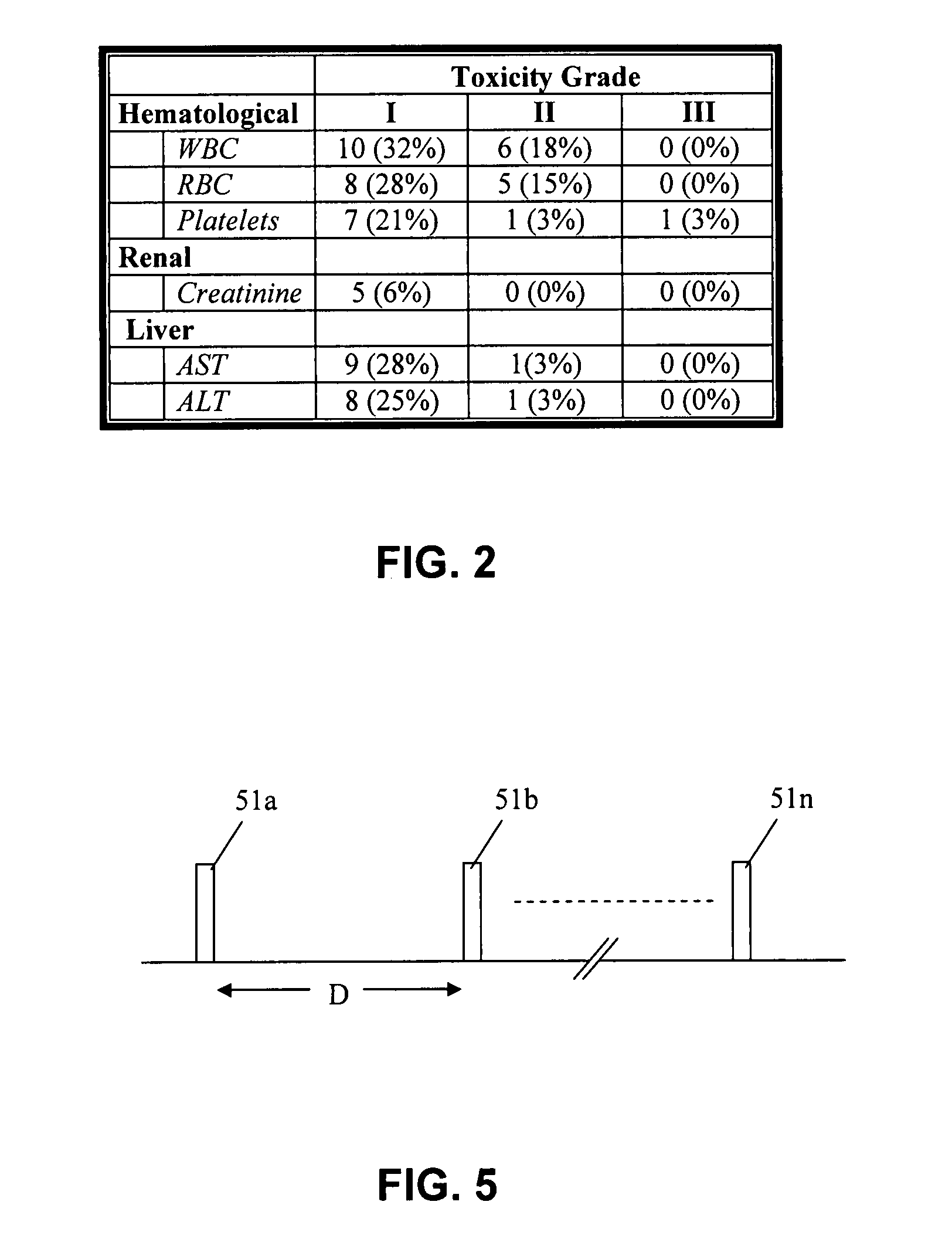High dose 111In-pentetreotide therapy of neuroendocrine tumors
a neuroendocrine tumor and high dose technology, applied in the field of neuroendocrine tumor treatment with targeted radiotherapy, can solve the problems of slow growth, poor prognosis, poorly differentiated and aggressive nets of lung origin
- Summary
- Abstract
- Description
- Claims
- Application Information
AI Technical Summary
Problems solved by technology
Method used
Image
Examples
examples
[0034]In a non-randomized trial, 32 patients (21 men and 11 women, from 16-83 years old (average 56 years old)) were tested. Among these patients, there were 25 Caucasions (78%), 2 Blacks (6%), 4 Hispanics (12.5%) and 1 other (3%). All patients had progressive neuroendocrine tumors (21 Carcinoma, 7 Islet Cell Carcinoma of the Pancreas, 1 Pituitary Adenoma, 1 Glucagonoma, and 1 Pheochromocytoma) and all had failed first line therapy (23 chemotherapy, 12 radiotherapy, and 28 surgery).
[0035]These patients had been diagnosed as having neuroendocrine tumors using serum chromogranin A (CgA) as a main tumor marker, and by somatostatin receptor scintigraphy for tumor localization. Other markers used include serum serotonin, pacreastatin, gastrin, normetanephrine, alkaline phosphatase (ALP), and 24-hour urine 5-HIAA. Histopathological examination also was used as a confirmatory test. Comparison of parameters was done between the amount of each marker before and after treatment All patients w...
PUM
| Property | Measurement | Unit |
|---|---|---|
| time | aaaaa | aaaaa |
| residence times | aaaaa | aaaaa |
| time | aaaaa | aaaaa |
Abstract
Description
Claims
Application Information
 Login to View More
Login to View More - R&D
- Intellectual Property
- Life Sciences
- Materials
- Tech Scout
- Unparalleled Data Quality
- Higher Quality Content
- 60% Fewer Hallucinations
Browse by: Latest US Patents, China's latest patents, Technical Efficacy Thesaurus, Application Domain, Technology Topic, Popular Technical Reports.
© 2025 PatSnap. All rights reserved.Legal|Privacy policy|Modern Slavery Act Transparency Statement|Sitemap|About US| Contact US: help@patsnap.com



